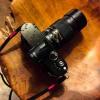DR of M240
-
Recently Browsing 0 members
- No registered users viewing this page.
-
Similar Content
-
- 14 replies
- 768 views
-
- 4 replies
- 694 views
-
- 10 replies
- 626 views
-
- 30 replies
- 1,682 views
-
- 50 replies
- 4,953 views
-




Recommended Posts
Join the conversation
You can post now and register later. If you have an account, sign in now to post with your account.
Note: Your post will require moderator approval before it will be visible.